Karnataka: Leopard on the loose puts India state in a spot
- Published
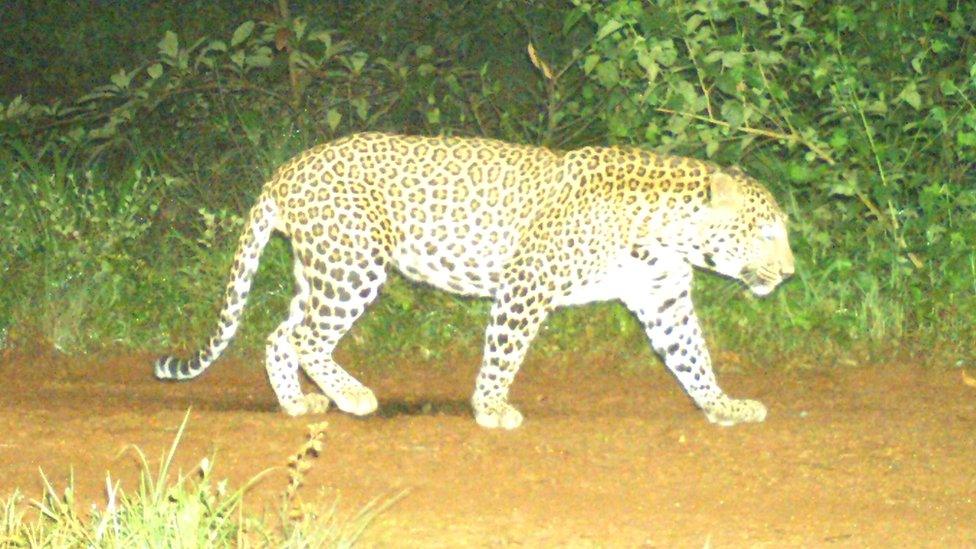
The leopard has been photographed with a camera trap
An operation to catch an elusive leopard has been under way in the southern Indian state of Karnataka for more than 27 days.
The animal first made headlines on 5 August when it attacked a labourer in the densely populated Belgaum city in northern Karnataka. The man was injured but survived the attack.
Since then, it has been spotted a few times around a golf course in the city, triggering panic among residents.
The state's forest department has enlisted around 300 personnel - from veterinarians and sharpshooters to anaesthetists - to catch the leopard and release it into a forest, but the operation has been unsuccessful so far.
The issue has also triggered a political firestorm, with opposition politicians asking the state's forest minister, Umesh Katti, to resign - Mr Katti said, external he was prepared to do so if that meant "the leopard will be captured". Karnataka is governed by the Bharatiya Janata Party (BJP).
"There has been a lot of public pressure to catch the leopard soon, so more personnel have been pressed into service," Vijayakumar Gogi, a top forest official in the state, told the BBC.
But conservationists say the large-scale operation - and media attention - might be counter-productive to catching the reclusive animal.
Leopards are shy creatures, but over the years, there have been several reports of them venturing into Indian villages and cities in search of prey as their habitats shrink.
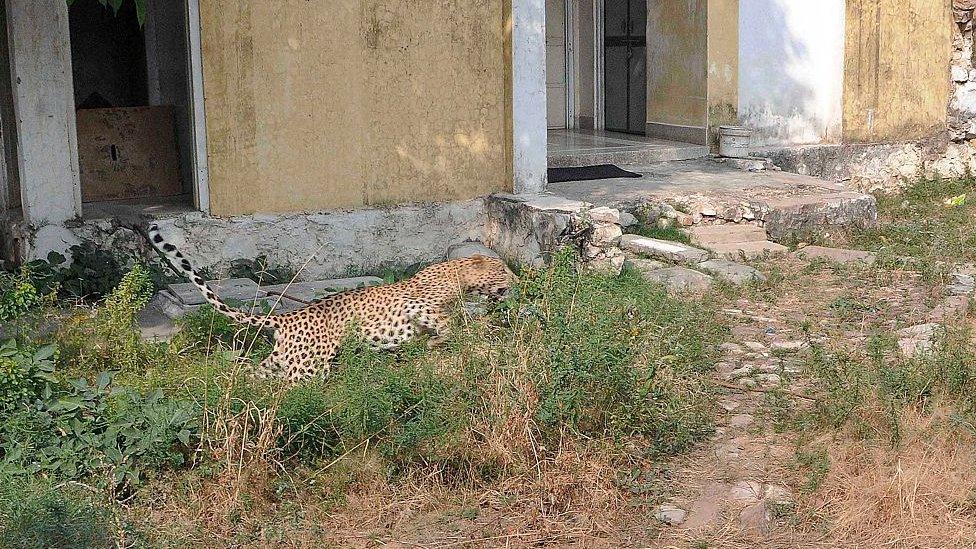
A leopard that had strayed into a city in western India in 2015
Karnataka - which has a vast forest area and several wildlife sanctuaries - has 1,783 leopards, the second highest in the country, as per government data. The animals have often been spotted in major cities in the state, such as Bangalore and Mysore.
Anthony S Mariappa, a Belgaum forest official who is heading the operation, says this is the first time a leopard had been spotted in Belgaum city, which is why people have panicked.
What is the operation like?
Around 20 camera traps have been set up at various locations near the golf course to track the leopard's movement. A camera trap is a camera with an infrared sensor that automatically clicks a photograph when it senses a moving object.
Ten metal cages containing dogs and piglets as bait have been set up to trap the animal.
"Efforts were also made to attract the leopard with pheromones," Mr Gogi says. "The scat and urine of a female leopard in heat were applied to the cages to lure the leopard inside."
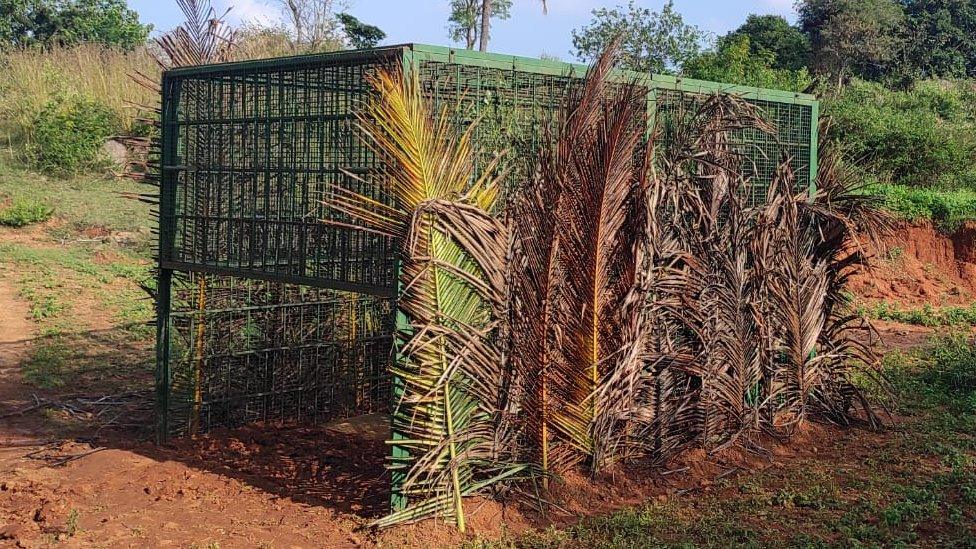
For rescue operations, cages are usually covered with leaves for camouflage
He adds that the team of more than 300 personnel has combed the 300-hectare area thoroughly - thrice - to locate the leopard. They planned to get a sharpshooter to fire a tranquiliser dart at the leopard so that it could be captured and relocated to a nature reserve.
"We also hired two trained elephants as it's easier to spot the leopard from a height."
Additionally, six JCB excavators were used to help personnel look for the leopard in dense terrain while still staying protected from a potential attack. At one point, a drone was also flown over the area to try and spot the animal.
So why hasn't the leopard been caught yet?
Mr Mariappa says the leopard was spotted twice during the operations but the animal snuck away before it could be caught.
He adds that heavy rains in the state have also hampered efforts.
The rains have reduced visibility and created several water bodies within a small area, making it harder for forest officials to set up traps.
"There's also an ample amount of prey in the area, so the leopard isn't interested in the baits we set up."
He adds that the media attention and mounting public pressure over the issue are causing problems.
"The authorities and the public want quick results, so we've been pushed to try new experiments or make incremental changes in our operations every day. But to catch a leopard, there should be very little human intervention and a lot of peace and quiet," he says.
Wildlife biologist Sanjay Gubbi, who has been studying leopards in Karnataka for over a decade, agrees.
"[Leopards] are more likely to escape at the slightest disturbance than attack. So large-scale operations launched as a knee-jerk reaction to public pressure do more harm than good," he says.
He also warns that capturing one leopard cannot solve the problem.
"What we need is more outreach programmes to help people understand leopards and their behaviour. This can help build tolerance and acceptance so that man and leopards can co-exist in shared spaces in a safer, more peaceful way."

Read more India stories from the BBC:

- Published11 February 2016
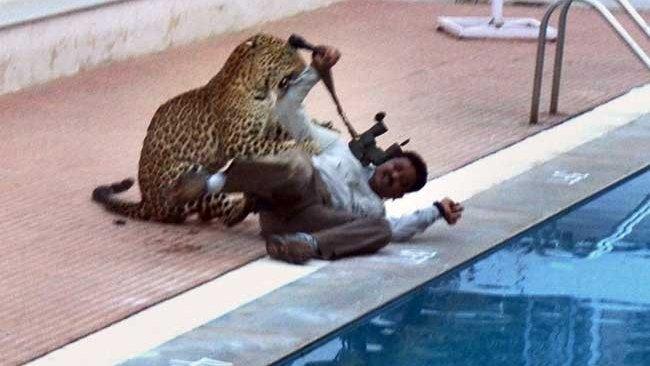
- Published2 December 2021
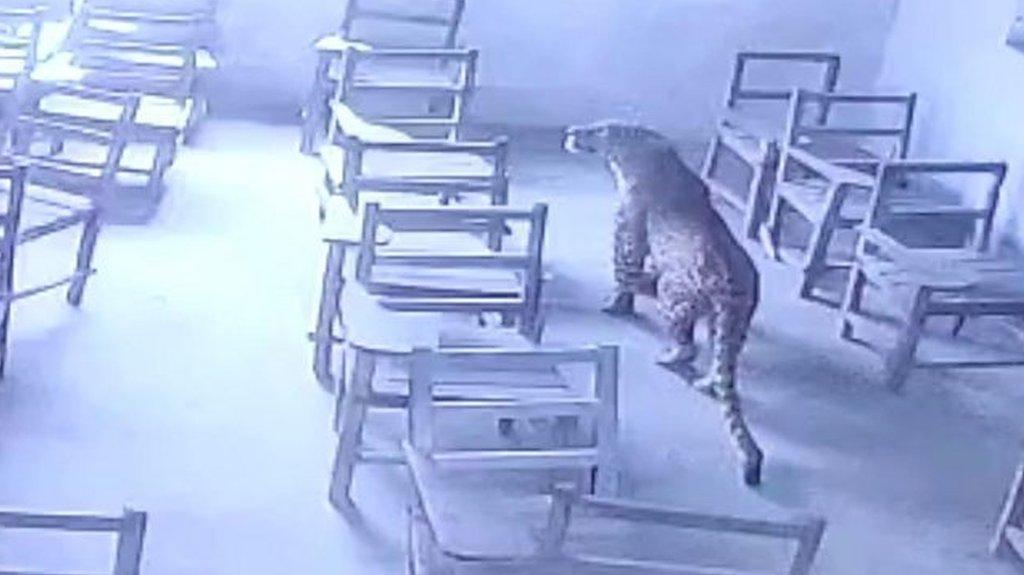
- Published3 August 2022